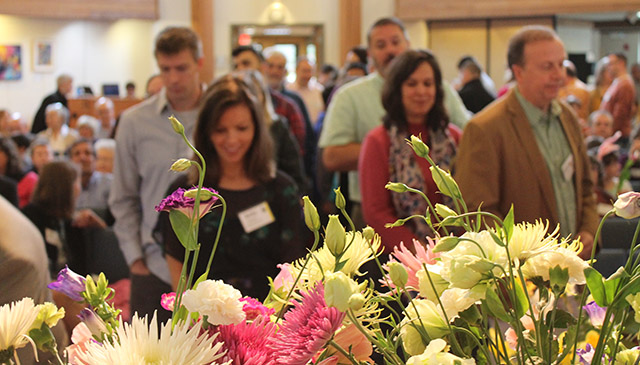The Importance of Flower Communion Celebrations for Unitarian Universalists
Adapted from a text by Reginald Zottoli
 The Flower Communion service was created by Norbert Capek (1870-1942), who founded the Unitarian Church in Prague, Czechoslovakia. He introduced this special service to that church on Jun. 4, 1923. For some time he had felt the need for some symbolic ritual that would bind people more closely together. The format had to be one that would not alienate any who had forsaken other religious traditions. The traditional Christian communion service with bread and wine was unacceptable to the members of his congregation because of their strong reaction against the Catholic faith. So he turned to the native beauty of their countryside for elements of a communion that would be genuine to them. This simple service was the result. It was such a success that it was held yearly just before the summer recess of the church.
The Flower Communion service was created by Norbert Capek (1870-1942), who founded the Unitarian Church in Prague, Czechoslovakia. He introduced this special service to that church on Jun. 4, 1923. For some time he had felt the need for some symbolic ritual that would bind people more closely together. The format had to be one that would not alienate any who had forsaken other religious traditions. The traditional Christian communion service with bread and wine was unacceptable to the members of his congregation because of their strong reaction against the Catholic faith. So he turned to the native beauty of their countryside for elements of a communion that would be genuine to them. This simple service was the result. It was such a success that it was held yearly just before the summer recess of the church.
The flower communion was brought to the United States in 1940 and introduced to the members of the Cambridge, MA, Unitarian church by Dr. Capek’s wife, Maja V. Capek. It was at her urging that Norbert left the Baptist ministry and turned to Unitarianism. It was during her tour of the United States that Maja introduced the flower communion, which had been developed in the Prague church. Unfortunately, Maja was unable to return to Prague due to the outbreak of World War II, and it was not until the war was over that Norbert Capek’s death in a Nazi concentration camp was revealed. From this beginning, the service has spread to many UU congregations and has been adapted along the way.
At the Easter flower communion, people are asked to bring a flower of their choice. When they arrive at Easter worship, large vases are waiting in the at the Sanctuary entrance. Congregational members help people place the flowers in the vases. The vases that contain all the flowers are a symbol of the united congregational fellowship.
Those volunteers who help with the vases then arrange the flowers and later carry the vases up to the front of the Sanctuary, arranging them in a beautiful, floral tableau. During the flower communion, congregants come up to the array of flowers and each congregant takes one.
The large, common bouquet would not be the same without the unique addition of each individual flower, and thus it is with each congregational community: It would not be the same without each and every one of us. Thus this service is a statement of our community.
By exchanging flowers, we show our willingness to walk together in our search for truth, disregarding all that might divide us. Each person takes home a flower brought by someone else – thus symbolizing our shared celebration in community. This communion of sharing is essential to a free people of a free religion.
